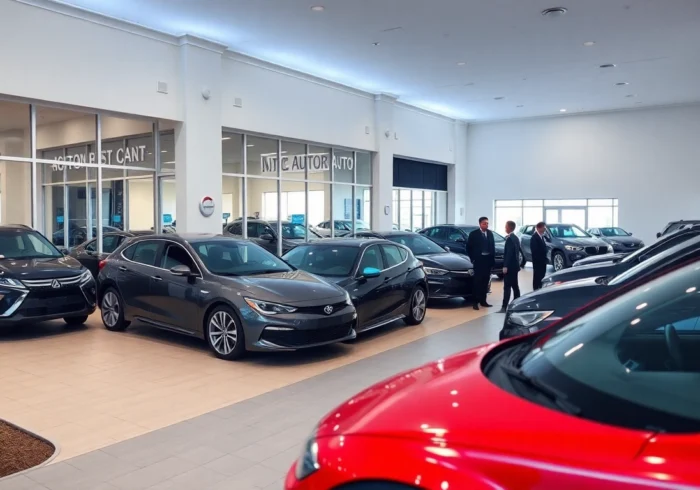Understanding the Importance of Trucker Reviews in Today’s Industry
The trucking industry is the backbone of commerce and logistics, responsible for delivering the goods that keep society functioning smoothly. From food products reaching groceries to essential supplies arriving at hospitals, professional drivers ensure that productivity and daily life remain uninterrupted. In this complex and vital industry, transparency and honest feedback are more critical than ever. Platforms like trucker reviews serve as essential tools for drivers to voice their experiences, identify industry standards, and influence improvements across the board.
The power of a driver’s voice extends beyond personal convenience; it shapes safety standards, industry policies, and customer satisfaction. When drivers share their honest experiences—whether they critique the cleanliness of a truck stop or praise the efficiency of fuel services—they collectively contribute to a more transparent and safer industry. This crowdsourced knowledge is invaluable for both newcomers seeking reliable facilities and industry stakeholders aiming to elevate service quality.
The impact of driver feedback on trucking safety and standards
Safety is paramount in trucking, with driver feedback directly influencing operational standards. Honest reviews can highlight issues like poorly maintained equipment, dangerous road conditions at certain truck stops, or inadequate safety protocols. For example, a recurring complaint about unsafe parking areas or malfunctioning lighting can prompt companies and facility management to implement corrective measures, reducing accidents and enhancing driver security.
Furthermore, driver reviews assist regulatory bodies and safety agencies by providing real-world insights into emerging hazards or systemic failures. Over time, aggregated feedback can lead to industry-wide safety campaigns, revised regulations, and best practices designed to safeguard drivers and cargo alike.
How reviews influence industry practices and customer satisfaction
Industry standards are often shaped by the collective voice of drivers, who are the primary customers of services like truck stops, fueling stations, and logistics hubs. Detailed reviews on amenities, cleanliness, and staff friendliness influence how service providers prioritize improvements. For instance, a truck stop receiving consistent feedback about poor restroom hygiene will likely invest in better maintenance, thereby increasing customer satisfaction and loyalty.
Additionally, shippers and logistics companies monitor these reviews to assess potential partners and vendors, ensuring that their drivers are working in supportive environments. As a result, high-quality feedback fosters a competitive market where excellence is recognized and rewarded, elevating standards industry-wide.
Building a transparent community for truck drivers
Creating an open and honest community allows drivers to share experiences without fear of retaliation or bias. Platforms like TruckerReview.com facilitate this by providing a space where drivers can leave reviews about truck stops, rest areas, and even trucking companies. This transparency encourages facilities to maintain high standards, knowing their reputation is on the line.
Such communities also serve as educational hubs for new drivers, offering insights into the best places to refuel, park, or find quality food. They foster camaraderie and collective accountability, ultimately making long-haul life safer, more comfortable, and more predictable.
Key Factors Trucker Reviews Cover in Assessing Truck Stops and Facilities
Fuel services and efficiency at major stops
Fueling is the primary reason drivers stop at truck stops, and reviews often focus intensely on the efficiency, price, and accessibility of fuel islands. Drivers value minimal wait times, consistent fuel prices, and the quality of fuel quality. For example, Pilot Flying J’s Rewards program provides discounts, but drivers frequently review how effectively these benefits translate into savings and convenience.
Efficient fueling stations with multiple islands and well-maintained pumps reduce downtime, which is critical for keeping on schedule. Feedback on fuel quality, payment systems, and availability of alternative fuels (like electric charging stations) are increasingly influencing industry practices.
Comfortable amenities: showers, lounges, and parking availability
Long-haul drivers spend significant time on the road, making comfort amenities a top priority. Restrooms and showers must meet cleanliness standards to ensure hygiene and fatigue management. For instance, the recently renovated facilities at Kearney’s Pilot Truck Stop are often praised for their upkeep, attracting more drivers.
Parking availability is another critical factor. A well-sized parking lot with ample spaces reduces stress and makes planning easier. Reviews frequently mention the convenience of access during non-peak hours and the safety of parking areas, especially at busy stops like Kansas City’s Flying J.
Driver lounges offering Wi-Fi, comfortable seating, and quiet spaces also enhance the long-haul experience, providing drivers a moment of relaxation and social connection amidst demanding schedules.
Food options and hygiene standards that drivers value
Quality and hygiene of food options significantly impact driver satisfaction. While quick snacks and convenience store offerings are standard, many drivers value substantial hot meals, especially at stops like Flying J’s integrated restaurant services. Cleanliness of eating areas and freshness of food are recurring review themes.
Facilities that offer diverse menu options—ranging from regional specialties to healthy choices—are viewed positively. The availability of drinks, snacks, and quick bites within the convenience store also plays a vital role in daily routines.
Leveraging Reviews to Improve Your Long-Haul Life
Choosing the best truck stops based on community insights
Navigating an extensive network of truck stops can be daunting, but driver reviews simplify decision-making. By consulting trusted platforms, drivers can plan routes that include stops recognized for their excellent amenities, safety, and efficiency. For example, knowing that the Kansas City Flying J consistently receives high marks for parking and showers allows for stress-free planning.
Incorporating real-time updates from fellow drivers further refines route choices, avoiding congestion or subpar facilities and optimizing time and comfort.
Sharing your personal experiences to guide others
Active participation in review communities helps build a more comprehensive and truthful database of services. Detailed feedback on aspects like staff friendliness, cleanliness, and amenities helps fellow drivers make informed decisions. For example, illustrating how a specific location consistently provides clean showers or complaint-worthy issues prompts improvements and accountability.
Personal stories about challenges—such as difficult parking or slow fueling—add authenticity and helpful context, fostering a supportive driver network.
Using reviews to navigate common challenges on the road
Road life comes with hurdles—traffic, delays, or subpar facilities. Reviews serve as real-time solutions, alerting drivers to potential issues before they arise. For instance, learning from others’ experiences about peak-hour congestion at specific stops enables better planning.
Sharing effective strategies—like arriving early or late—to avoid crowds or pointing out hidden gems with excellent services, empowers drivers to minimize stress and maximize efficiency.
Integration of Reviews into Industry Tech and Apps
The role of platforms like TruckerReview.com
Platforms like TruckerReview.com are revolutionizing how drivers access and contribute information. These websites aggregate reviews, ratings, and ratings on numerous facilities, offering an invaluable decision-making tool. They also incorporate advanced filtering options—by location, amenity type, or specific issues—allowing drivers to quickly find what suits their needs.
Improving the interface and real-time updates are ongoing priorities, making sure drivers have the latest insights for their routes.
How real-time reviews influence driver decisions
Immediate feedback—such as alerts about cleanliness issues or safety concerns—enables drivers to adapt plans on the fly. Mobile apps and integrated dashboards make reviewing and accessing feedback seamless, ensuring safety and efficiency.
As these real-time inputs become more prevalent, the industry moves towards a more responsive and accountable system, where service quality continuously improves based on driver experiences.
Future innovations in driver feedback systems
Emerging technologies like AI-driven sentiment analysis, IoT sensor data, and driver-specific dashboards promise to make feedback even more actionable. Imagine a system that not only reports a truck stop’s cleanliness but also predicts congestion or recommends optimal arrival times based on historical data.
Integration with navigation and fleet management tools will further streamline route planning, elevating the long-haul experience through smarter, data-backed decisions.
Best Practices for Writing Impactful Trucker Reviews
Honesty and specificity in feedback
Authenticity is the cornerstone of valuable reviews. Drivers should aim to provide specific details—such as the cleanliness level of shower facilities, the friendliness of staff, or delays experienced—rather than vague statements. For example, noting that the “shower stalls were spotless and water pressure strong” offers more utility than simply claiming “shower was good.”
Precise feedback helps facilities identify exact issues and recognize strengths, leading to targeted improvements.
Highlighting both positives and areas for improvement
Balanced reviews foster credibility and constructive change. Acknowledge amenities that impress (e.g., quick fuel pumps, excellent parking) while also citing problems (e.g., limited food options, outdated equipment). For instance, praising a location’s friendly staff but suggesting better signage or additional parking spaces provides actionable insights.
This balanced approach encourages facilities to maintain high standards and address deficiencies proactively.
Engaging with the community for collective growth
Active engagement—such as responding to reviews, asking questions, and sharing tips—strengthens the community. Constructive dialogue between drivers and service providers fosters continuous quality improvement. For example, suggesting a need for more trash receptacles in certain areas can lead to immediate actions.
Community-driven review platforms turn individual experiences into collective assets, driving industry standards upward.



